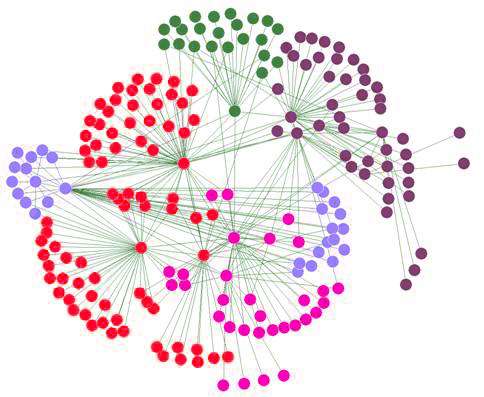Team analyzed network heterogeneity of suprachiasmatic nucleus to reverse age-related decline in circadian rhythm

If you've ever felt groggy the morning after traversing time zones, you can thank the temporary mismatch between your body's 24-hour circadian rhythm and your new local time. In mammals, this rhythm is governed on a neuronal and hormonal level by the suprachiasmatic nucleus, a tiny region of the brain's nestled directly above the two optic nerves. But it's not just a long flight that can throw us out of whack. As we age, the suprachiasmatic nucleus, or SCN, tends to exhibit a weaker circadian rhythm, which can result in sleep disorders, metabolic syndrome and depression.
While the evidence behind this age-related weakening has been established in medical literature, the mechanisms behind it, and the connectivity structure of the neurons, have remained elusive. To better understand these neuronal and hormonal mechanisms and help develop potential treatments, researchers at the University of Shanghai for Science and Technology in China have conducted experimental analyses of the SCN's connections, with the goal of determining its degree of heterogeneity. This is a measure of a measure of how many "hub" nodes within a network connect to other nodes.
Networks, in general, consist of nodes and links. If the degree of heterogeneity in a network is high, these hubs link to many other nodes; if it's low, the network topology is considered "flat," and the difference between the hubs and the other nodes is small.
The SCN's master clock consists of about 20,000 neurons coupled together through neurotransmitters. Within this network, about 25 percent of the neurons are coupled together into a subgroup that receives light from the retina. The remaining 75 percent of the neurons are coupled to these neurons—these subgroups are known, respectively, as the ventrolateral and dorsomedial subgroups.
In their current paper, which appears this week in CHAOS, the researchers analytically mapped these connections in the SCN as four different types of networks ranging from low to high levels of heterogeneity. These were the all-to-all network, the Newman-Watts network, the Erdös-Rényi network and the Barabási-Albert scale-free network.
The researchers found that in the "all-to-all" network, which was the least heterogenous, the SCN tends to lose the circadian rhythm induced by the other three networks, making it the least likely network type. They also found that the amplitude, or wave-like crest, of the circadian rhythm is largest in the Barabási-Albert scale-free network.
"The experiments suggest that the SCN is a heterogeneous network, but so far the details of the network structure of the SCN haven't been discovered," said Changgui Gu, an associate professor at the University of Shanghai for Science and Technology.
According to Gu, if the network structure of the SCN were heterogenous, this could be used to strengthen the circadian rhythm through bifurcation theory, in which a small, smooth change made to a boundary value in a system causes a qualitative change in the network's pattern of arrangement.
Future research for Gu and his colleagues may involve collaborations with medical researchers to develop drugs that can strengthen the SCN network's heterogeneity to counteract the weakening effects of age.
More information: "The circadian rhythm induced by the heterogeneous network structure of the suprachiasmatic nucleus," CHAOS, DOI: 10.1063/1.4949012
Journal information: Chaos
Provided by American Institute of Physics




















